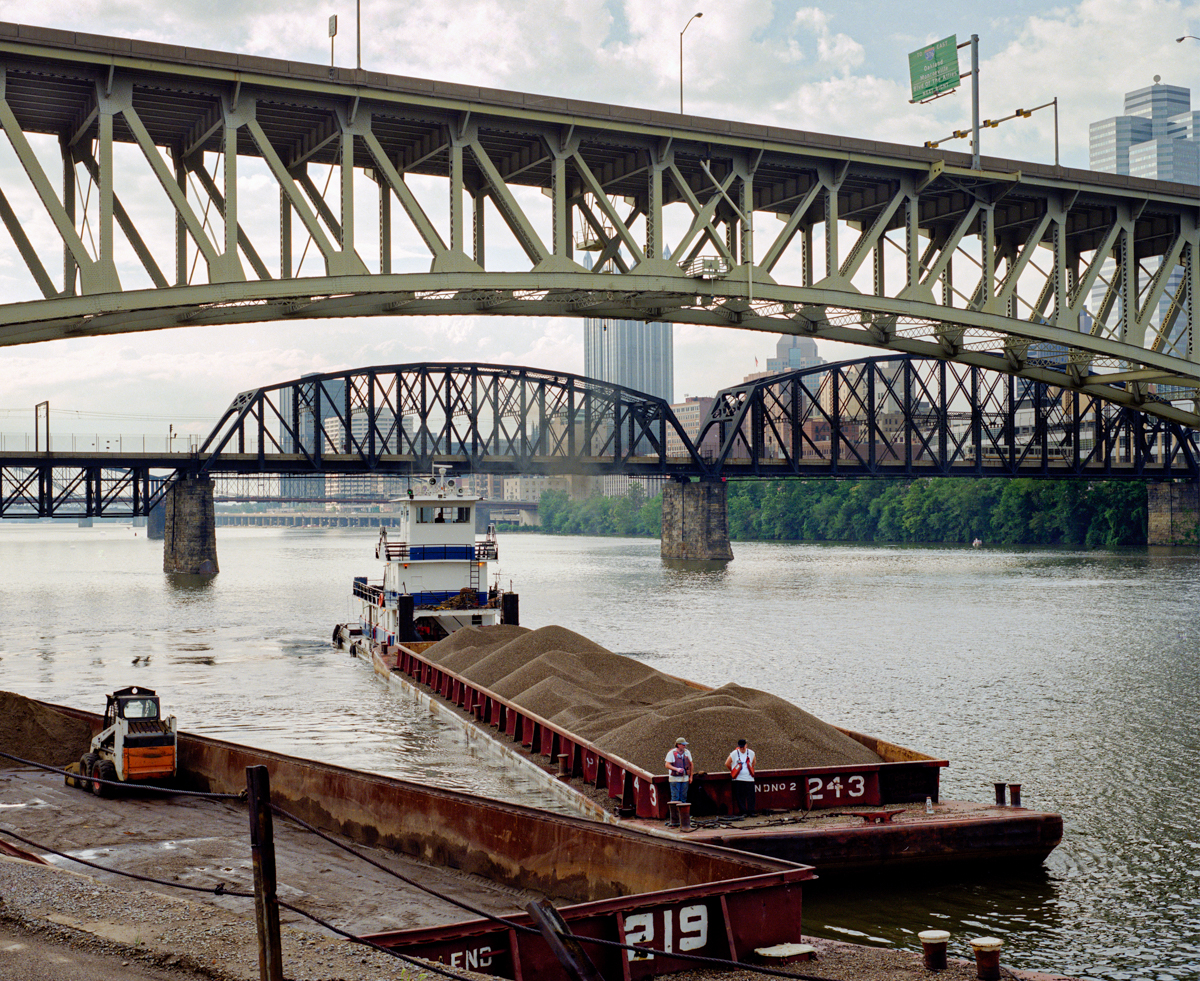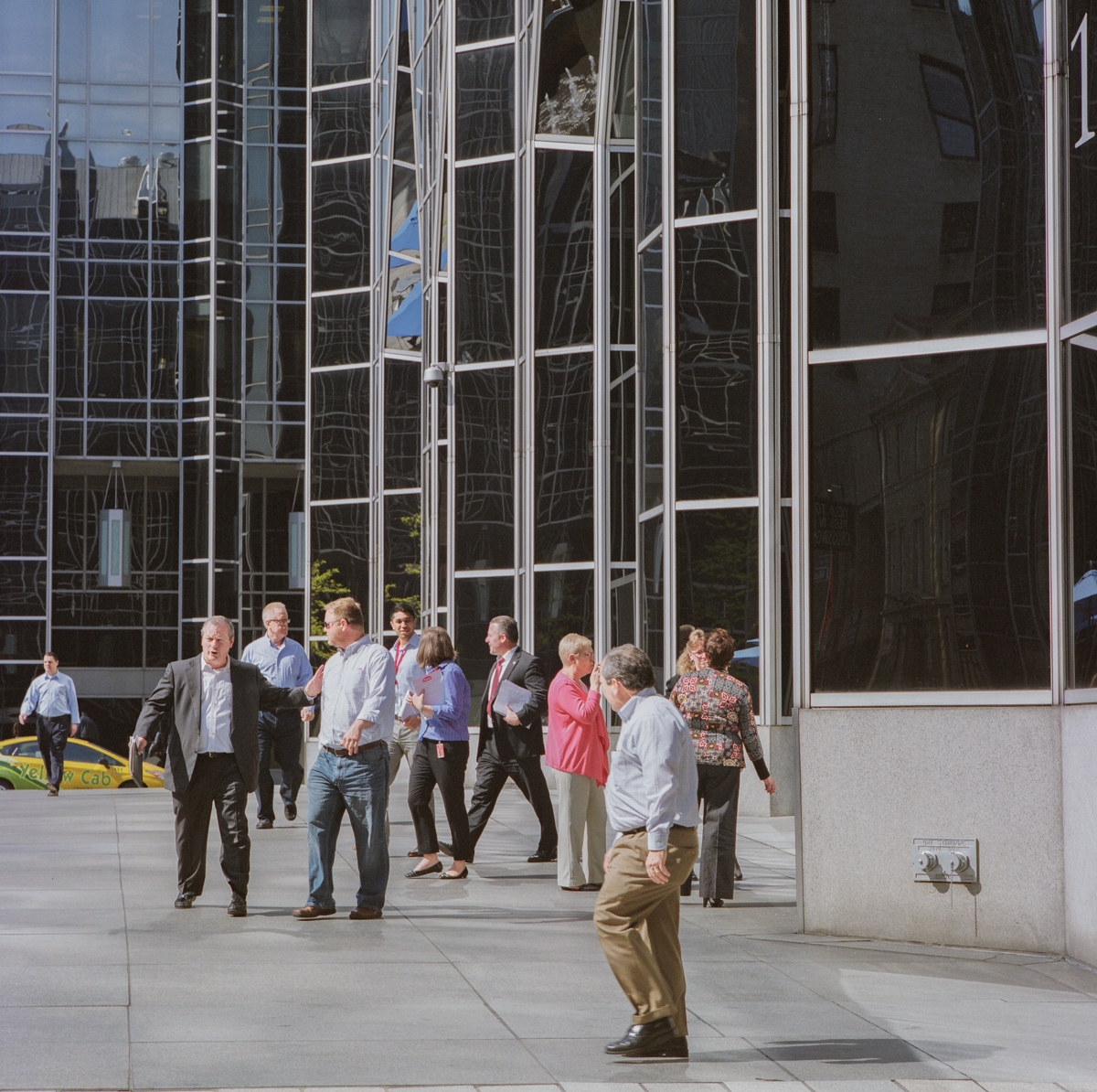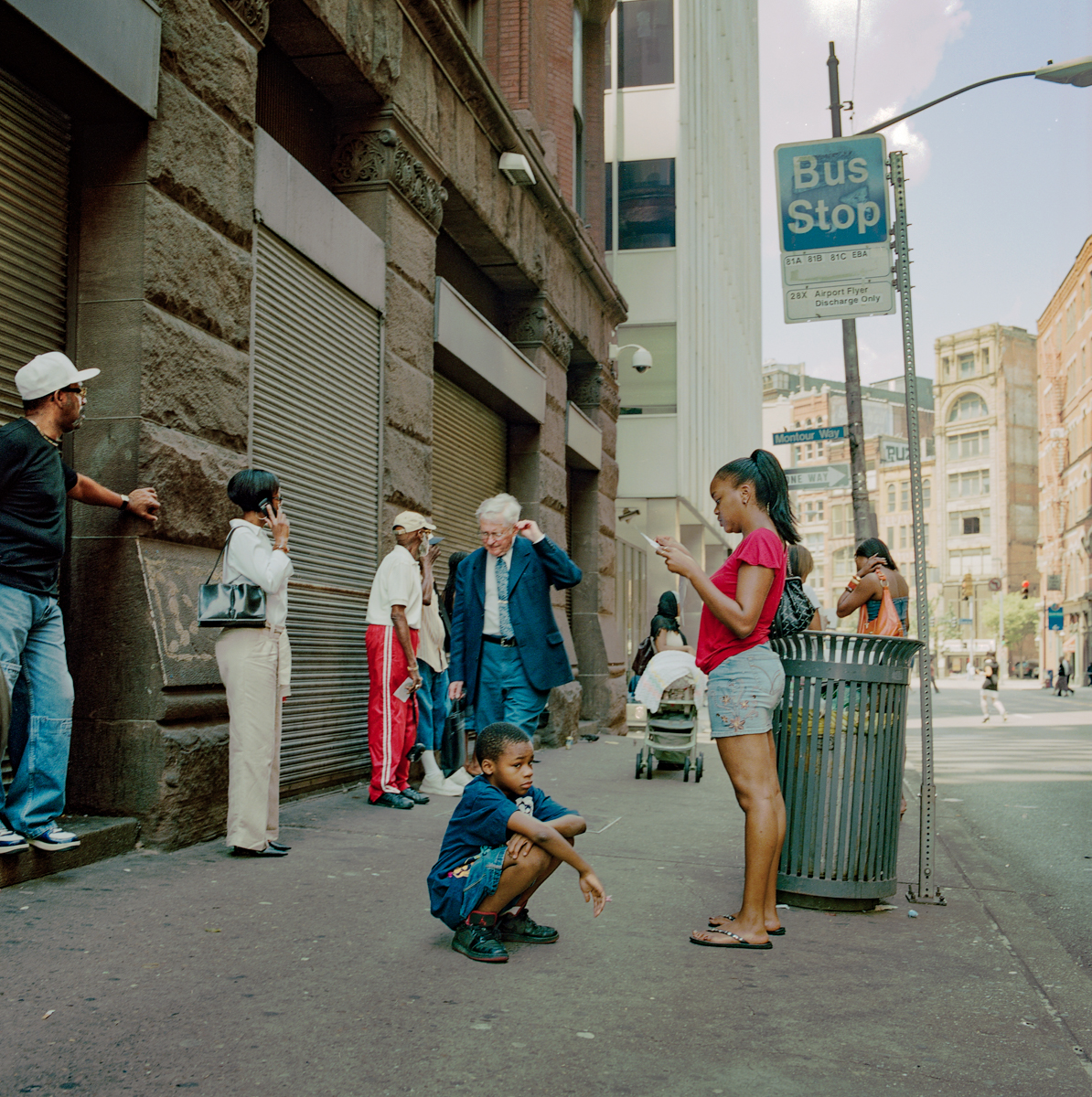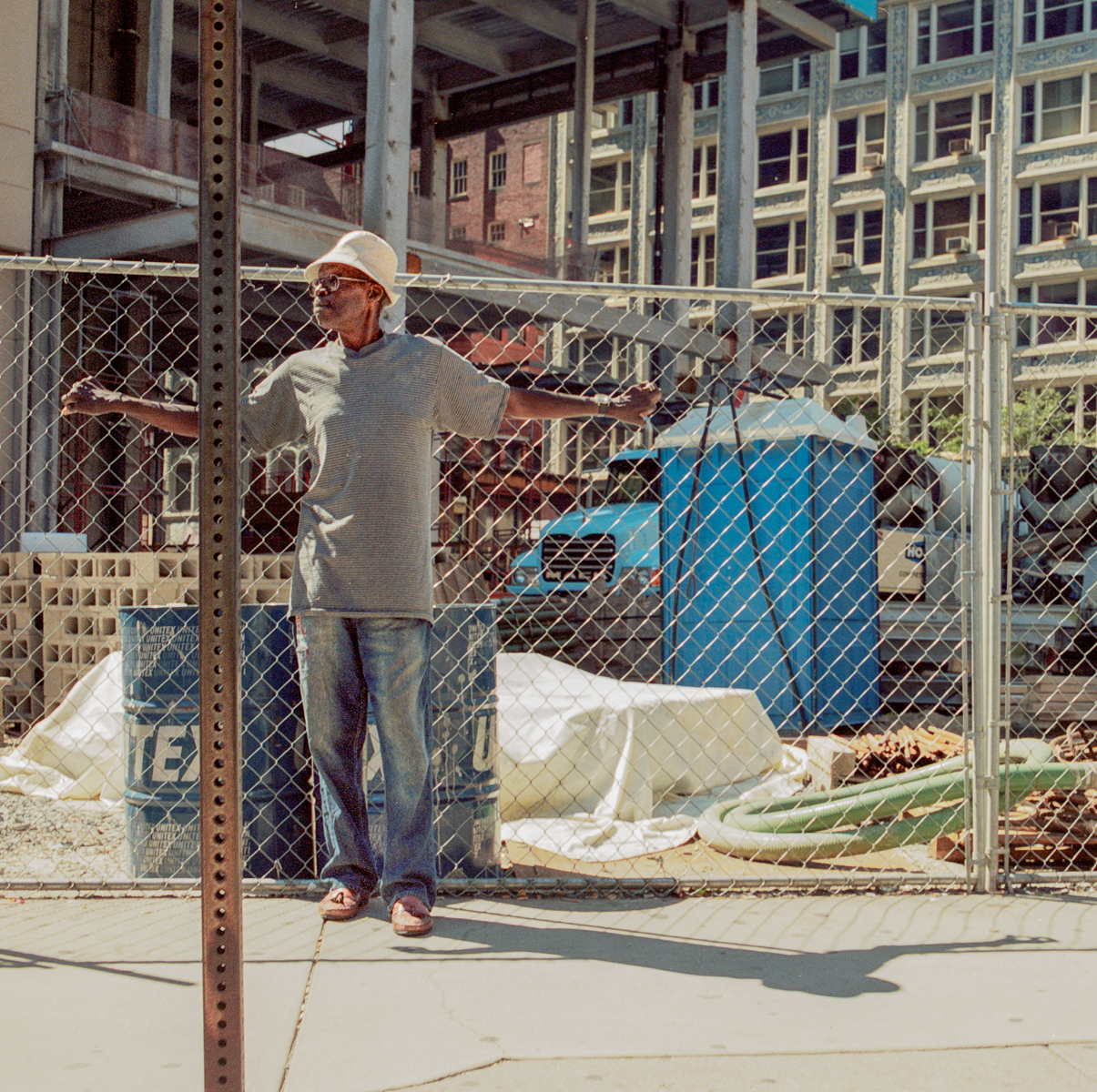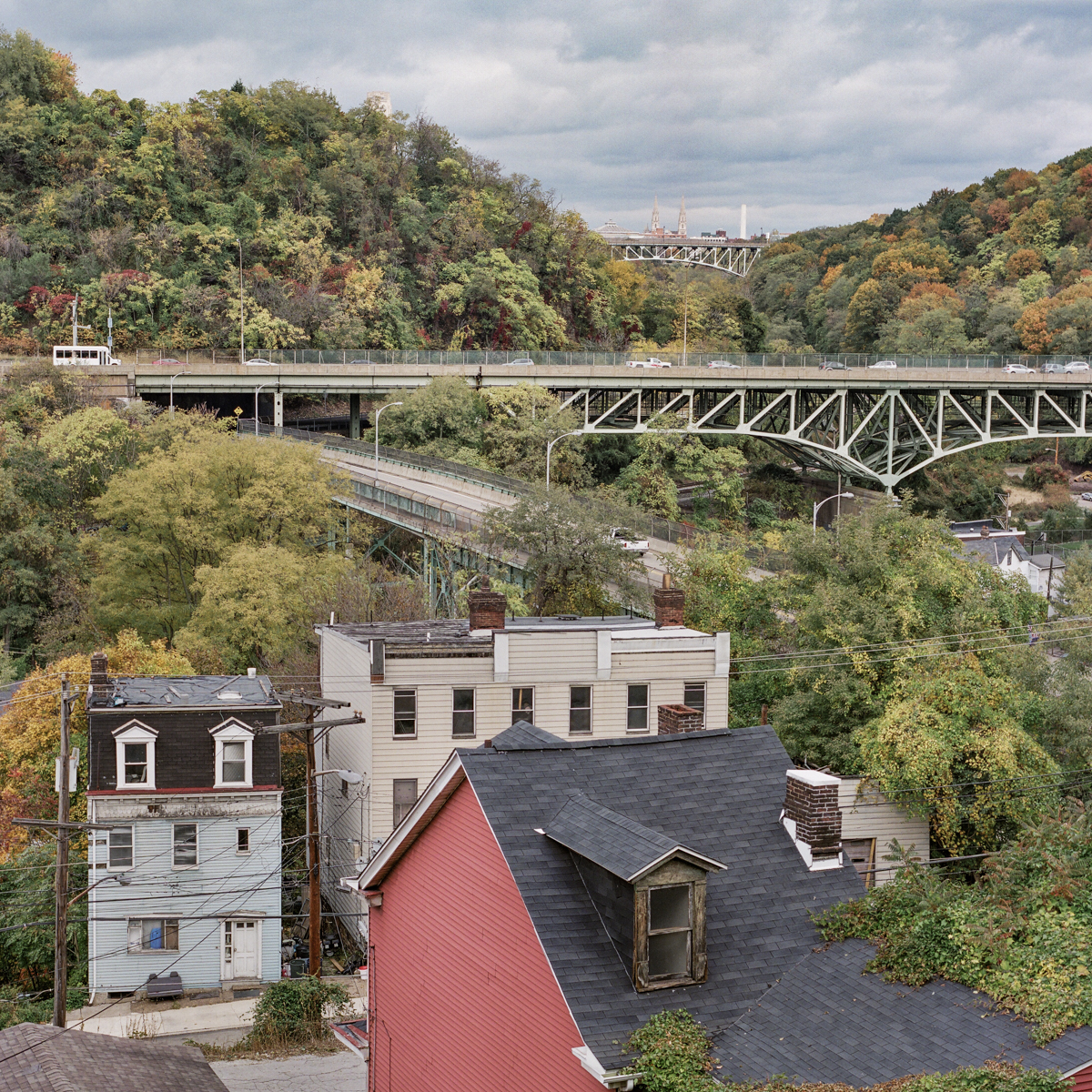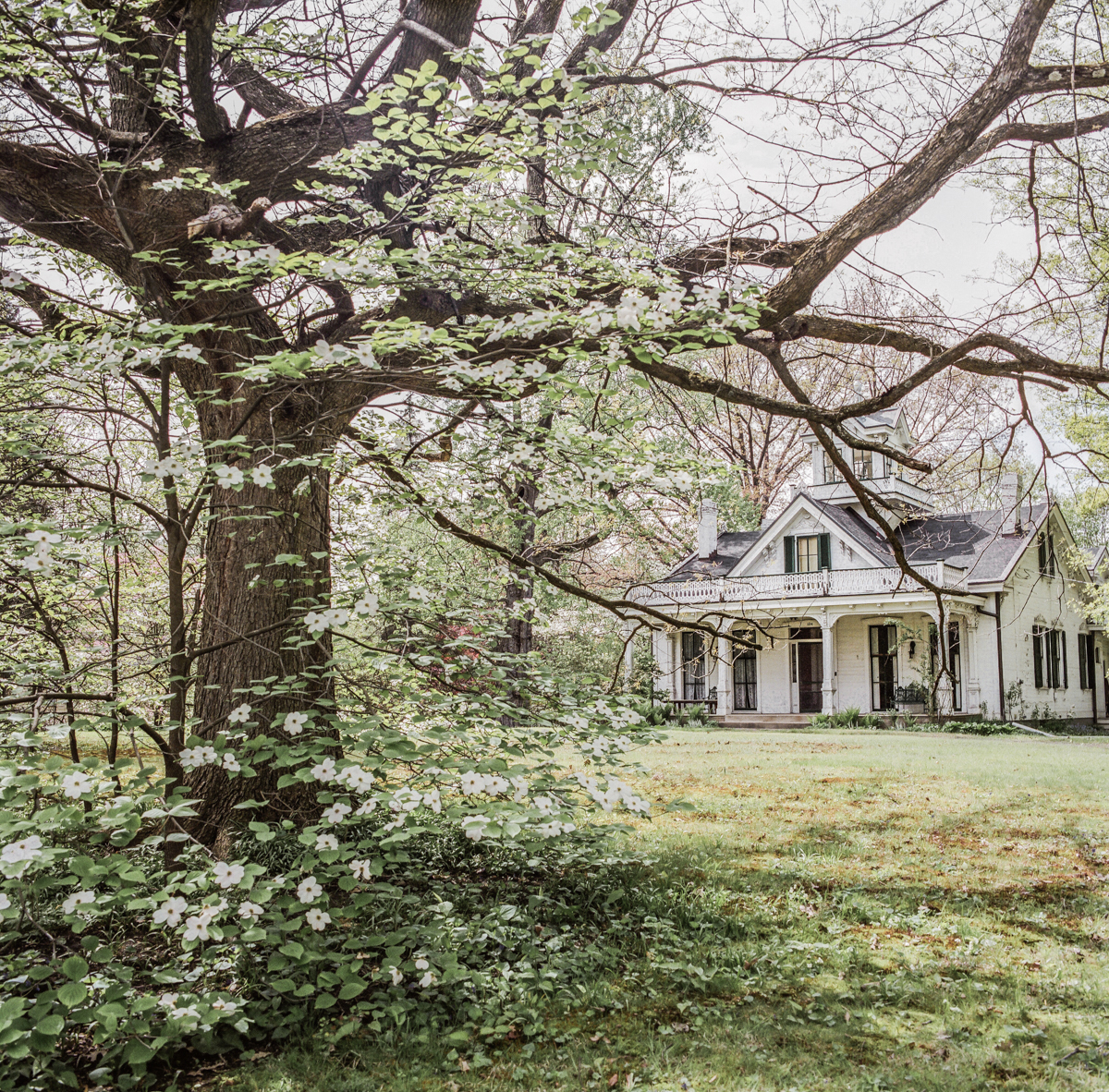Pittsburgh American city
Since 2008, the city of Pittsburgh has been my main field of exploration in the United States. By successive appropriations, I photograph it in the tradition of street photographers. Pittsburgh’s urban fabric bears myriad, visible signs of the great industrial city it once was and its identity remains determined by the constant link of demolition and reconstruction. I seek to produce photographs that bring together multilayered temporalities and weave links between perceptions, those intimate and personal, as well as social and collective.
This body of photographs has given me the opportunity to deepen my questioning and understanding of the relationship to and influence of American visual culture in my practice. It is foundational in that it takes part in the tradition of artistic dialogue between Europe and the United States. This tradition made visible through the photographs of Atget-Walker Evans, Henri Cartier-Bresson-Walker Evans and more recently, the Ecole de Düsseldorf and the New Topographic, all of which have marked the history of contemporary photography.
In Pittsburgh, my position is that of the foreigner who sees what habit would otherwise mask. However, my experience is also nourished by the family stories that spiced my childhood, those of my uncles and, aunts who emigrated to southwestern Pennsylvania in the early part of the twentieth century. And to my Pennsylvania-born wife, though whom I have been able to build personal connections that have facilitated my comprehension of this city.
Pittsburgh American city
À partir de 2008, la ville de Pittsburgh est devenue mon principal champ d’exploration aux Etats-Unis. Par appropriations successives, j’ai photographié la ville dans la tradition des photographes de rue (street photographers). Le tissu urbain porte une multitude de signes visibles de la grande cité industrielle qu’elle fut.
Dans une ville ou l’identité est détermine par le lien constant de démolition-reconstruction, je cherche à produire des photographies qui rapprochent les temporalités et qui tissent des liens à partir de perceptions autant intimes et personnelles que sociales et collectives.


